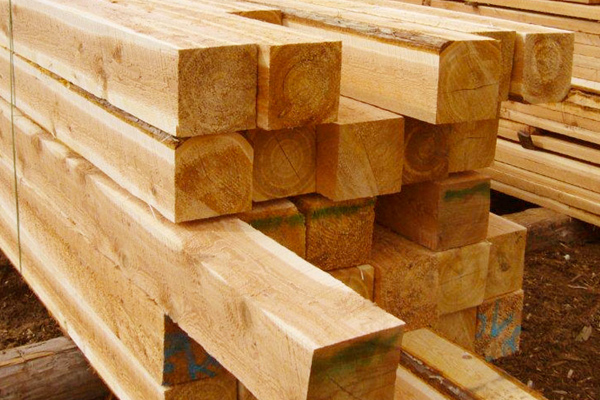
If you’re a DIY enthusiast or a professional woodworker, you know selecting the right type of lumber for your project is critical to its success. With a wide variety of wood species and grades available at your local lumber yard, it can be overwhelming to make the right choice. This comprehensive guide will help you understand the different types of lumber, their applications, and how to choose the right one for your project.
Understanding Wood Species
Lumber is typically classified into two categories: hardwood and softwood. The terms don’t necessarily indicate the actual hardness or softness of the wood, but rather the type of tree from which they are sourced.
Hardwoods: Derived from deciduous trees, hardwoods are usually denser and more durable than softwoods. Some common hardwood species include oak, maple, cherry, walnut, and mahogany. Hardwoods are generally more expensive and are ideal for projects requiring durability and strength, such as furniture, flooring, and cabinetry.
Softwoods: Sourced from coniferous trees, softwoods are less dense and often less expensive than hardwoods. Common softwood species include pine, fir, spruce, and cedar. Softwoods are well-suited for projects like framing, decking, and paneling, as well as outdoor furniture.
Wood Grades and Appearance
Lumber is also categorized by its grade, which refers to the quality and appearance of the wood. Higher-grade lumber has fewer knots, blemishes, and defects, while lower-grade lumber may have more imperfections. Lumber grades are typically assigned by organizations such as the National Hardwood Lumber Association (NHLA) for hardwoods and the Western Wood Products Association (WWPA) for softwoods.
Here are some common lumber grades to consider:
- Select Grade: Select grade lumber is the highest quality and most visually appealing. It has minimal knots and blemishes, making it perfect for furniture, cabinetry, and other projects where appearance is important.
- Common Grade: Common grade lumber is more affordable than select grade but may have more knots and imperfections. It is suitable for applications where appearance is less critical, such as framing and structural projects.
- Utility Grade: Utility grade lumber has the most knots, blemishes, and defects. It is the least expensive and is generally used for projects where appearance is not a concern, such as subflooring and temporary structures.
Dimensional Stability and Moisture Content
The moisture content of lumber can significantly affect its dimensional stability. Wood tends to expand and contract with changes in humidity, which can cause warping, swelling, or shrinkage. When choosing lumber for your project, consider the following factors:
- Kiln-Dried Lumber: Kiln-dried lumber has been heated in a controlled environment to reduce its moisture content, making it more dimensionally stable. It is ideal for indoor projects, where fluctuations in humidity are minimal.
- Air-Dried Lumber: Air-dried lumber is seasoned naturally by exposing it to outdoor air. It usually has a higher moisture content than kiln-dried lumber and may be less dimensionally stable. However, it can be an excellent choice for outdoor projects, as it’s more likely to acclimate to the surrounding environment.
- Pressure-Treated Lumber: Pressure-treated lumber is chemically treated to resist decay and insect damage, making it suitable for outdoor projects exposed to moisture, such as decks, fences, and pergolas. Keep in mind that pressure-treated lumber should not be used for indoor applications or in direct contact with food or water.
Now that you understand the differences between wood species, grades, and moisture content, it’s essential to consider your specific project requirements when selecting lumber:
- Strength and Durability: For projects that require high strength and durability, choose hardwood species like oak or maple, and opt for a higher-grade lumber with minimal defects.
- Aesthetics: If the appearance of the wood is crucial, select grade lumber with a visually appealing grain pattern and fewer knots or imperfections. Hardwoods like cherry and walnut are popular for their attractive appearance.
- Budget: Consider the cost of the lumber when making your decision. Softwoods and lower-grade lumber are more affordable options for projects where aesthetics and durability are less important.
Choosing the right type of lumber for your project is essential to its success. By understanding the differences between hardwood and softwood species, lumber grades, and moisture content, you can make an informed decision based on your project’s specific requirements. Always consider factors such as strength, durability, aesthetics, budget, and environmental impact when selecting the best lumber for your needs.
If you’re unsure of which lumber best suits your project, get in touch with the experts at Jordan’s Building Center. With decades of lumber experience, we know just how to make your project turn out the way you’re imagining it will.

